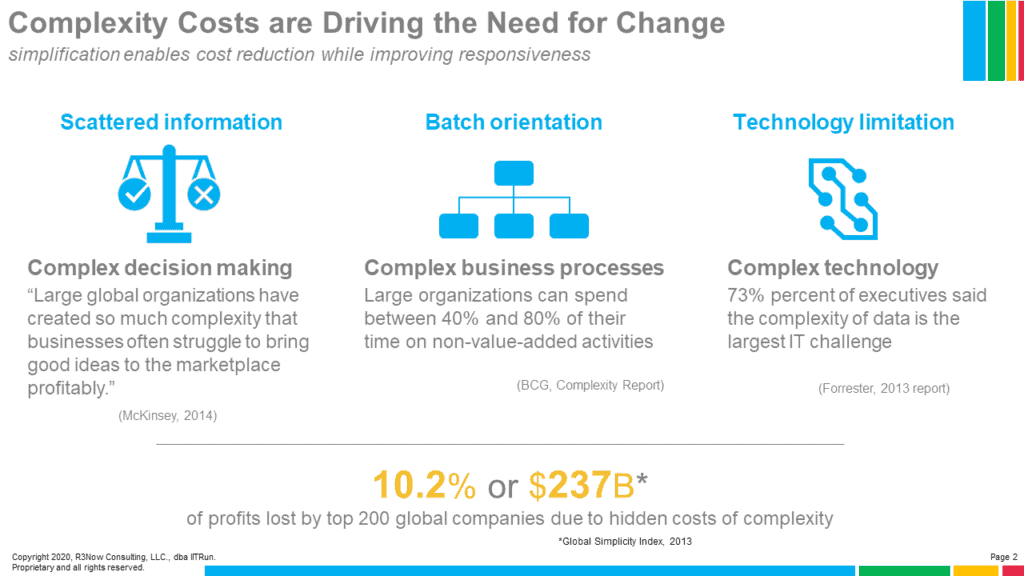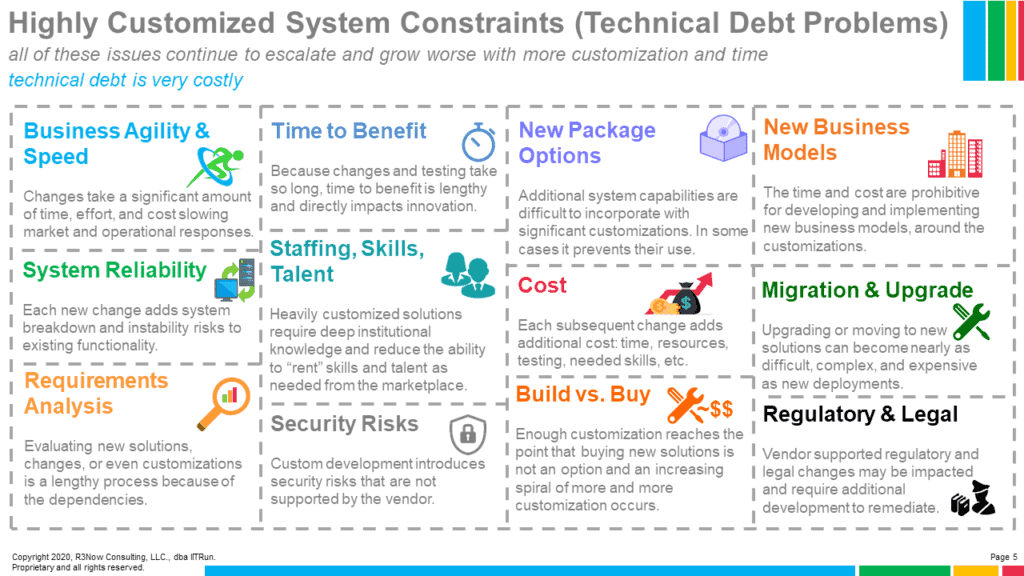Technical Debt’s High Costs Only Accelerate with Time
While finding opportunities in the high cost of technical debt may seem counterintuitive, it is not. By simplifying and modernizing, you free up delivery capacity, and capital, that is tied up in old software (vendor maintenance and support staff). Both the simplification and modernization that come with the technical debt reduction allow you to more quickly make changes (more capacity), while creating a virtuous cycle of improvement.

Think about it, that Global Simplicity Index study from 2013 found hidden complexity costs 10.2% of profit loss, or $237 billion dollars for the top 200 global companies. That money could be freed up to go straight to the bottom line, be redeployed for greater return, or improve competitive position.
Two years later in 2015, over 60% of the respondents concluded “complexity increases costs by at least 11%” (rather than the 10.2% previously determined). See the Harvard Business Review study referenced in our previous post on Digital Success Starts with Simplifying and Modernizing.
Along with the obvious technical debt costs of support staff, hardware, and software, a number of hidden costs directly impact business and IT agility. The Harvard study showed that the complexity costs impact overall organizational costs by approximately 11%, not just the IT department.
Some of the Hidden Costs of Technical Debt
Some of the costs are tangible financial measures, whereas others may be difficult to quantify. Some of the costs that are difficult to quantify are like the hidden part of an iceberg. They may be larger and carry far greater impact than the costs you can see. The following chart lists a dozen examples of some of those intangibles.
How many of these items affect your organization?

While much of the recognized technical debt is related to customization, you may experience an additional layer of technical debt from aging or even unsupported applications and infrastructure. In today’s technology environment where cyber warfare, cyber espionage, and even state-sponsored hacks are the norm, aging and complex infrastructure represent numerous attack surfaces and potential failure points.
Conclusion
Simplifying and modernizing becomes much more of an imperative when you consider the bulk of its impacts:
- Costs related to resource capacity constraints in responding to business technology needs
- Enterprise costs impacting efficiency and competitiveness
- Operational expenses (OpEx) for support staff who could be retooled and redeployed to digital efforts
- Software license maintenance costs
- Difficulty in finding skilled resources to backfill capacity
- Numerous intangible costs
As an opportunity to free up OpEx budget and resource capacity, you can start small and grow into this. Competitive markets and economic changes dictate complexity reduction to be a priority for digital business transformation.
Next week, we look at moving from the Vicious Cycle to the Virtuous Cycle by addressing simplification and modernization.
If you like this series of posts, please like and share them so others can receive them as well!





